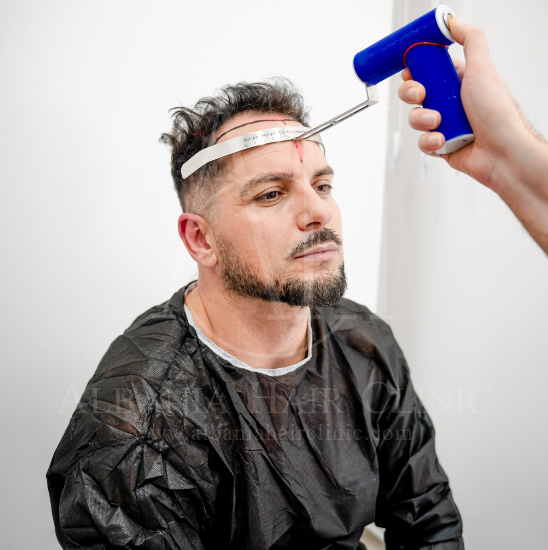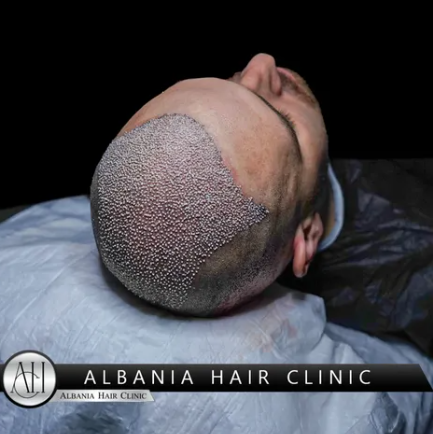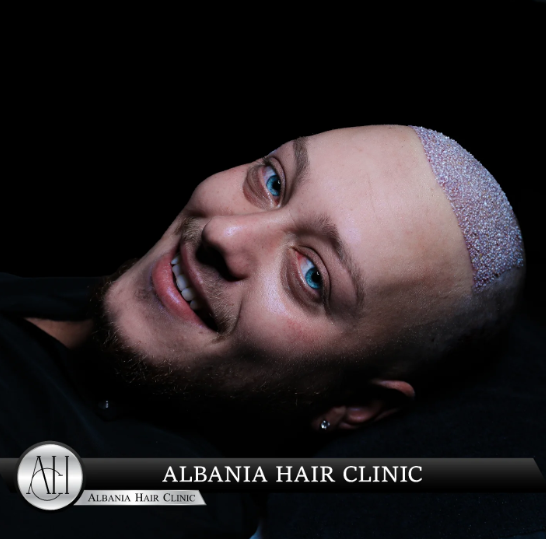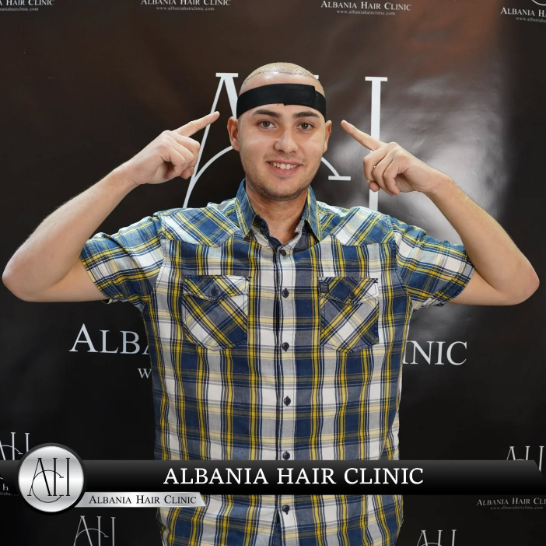A hair transplant is a significant investment in regaining your confidence and improving your appearance. After undergoing the procedure, proper aftercare is crucial to ensuring the success of the transplant. One of the most important aspects of aftercare is protecting your scalp from sun exposure. While sunshine is vital for overall health, the sun’s ultraviolet (UV) rays can be harmful to newly transplanted hair follicles. This blog will guide you through essential sun exposure guidelines after a hair transplant, explaining why it’s important to protect your scalp and how to safely enjoy the sun during recovery.
Table of Contents
ToggleWhy Sun Exposure Matters After a Hair Transplant
Your scalp undergoes significant trauma during a hair transplant procedure, whether through Follicular Unit Extraction (FUE) or Direct Hair Implantation (DHI). The skin and hair follicles are in a delicate state, and exposure to harmful UV rays can compromise the healing process and potentially lead to complications such as:
- Increased Risk of Scarring: UV rays can damage healing skin, leading to increased scarring and delayed healing.
- Sunburn: The scalp is more prone to sunburn after a transplant, which can cause discomfort, irritation, and damage to the follicles.
- Hyperpigmentation: Prolonged sun exposure can cause dark spots or patches on the scalp, resulting in uneven skin tone.
- Dehydration: UV exposure can dry out the scalp, which hinders the healing process and may affect the quality of hair regrowth.
Given these risks, it’s crucial to follow proper sun exposure guidelines after your hair transplant.
Immediate Post-Transplant Period (First 7–10 Days)
The first week after your hair transplant is the most critical period for healing. During this time, the hair follicles are very sensitive and must be treated with the utmost care. Here are some sun protection tips for this phase:
1. Avoid Direct Sunlight Completely
For the first 7–10 days, it is essential to avoid direct sun exposure entirely. Your scalp is in a vulnerable state, and even minimal exposure to the sun could result in damage to the hair grafts. Plan to stay indoors or in shaded areas during this period.
2. Use a Loose-Fitting Hat
If you need to go outside, wear a loose-fitting hat that does not come into contact with the newly transplanted grafts. A breathable hat made from natural materials like cotton is ideal. Avoid tight caps or hats that press down on the scalp, as they may dislodge or irritate the grafts.
3. Stay Hydrated
Proper hydration aids in the healing process. Drink plenty of water to keep your scalp and body hydrated, especially if you are in a warmer climate.
Week 2 to 4 Post-Transplant
By the second to fourth week, your scalp should be healing, but your hair follicles are still in a fragile state. While you may start resuming normal activities, you’ll need to continue practicing sun protection. Here’s how to proceed:
1. Wear Sunblock on the Scalp
Once your doctor gives the green light, you can start applying sunscreen to your scalp if you need to go outdoors. Choose a high-SPF sunscreen (SPF 30 or higher) that is gentle on the skin and formulated for sensitive areas. Mineral-based sunscreens, such as those containing zinc oxide, are good options for the scalp.
2. Limit Outdoor Time
Limit the time you spend outdoors, especially between 10 AM and 4 PM, when the sun’s rays are the strongest. Seek shade whenever possible and minimize unnecessary exposure.
3. Use an Umbrella for Extra Shade
Consider carrying a UV-protective umbrella if you need to be outside during peak sun hours. This will provide extra protection for your scalp without putting pressure on the grafts like a hat might.
Weeks 4 to 8 Post-Transplant
By the fourth week, your scalp will be much more resilient, but the healing process is still ongoing. Continue practicing sun safety for optimal results:
1. Continue Wearing a Hat or Sunscreen
By now, you can comfortably wear hats without worrying about harming the grafts. If you prefer not to wear a hat, continue to apply sunscreen regularly, especially if you’ll be spending time outside.
2. Gradual Sun Exposure
If you’re eager to enjoy some time in the sun, start with short, controlled exposure. Begin with just a few minutes, gradually increasing over time. Always apply sunscreen before going outside.
3. Monitor Your Scalp for Signs of Damage
Pay attention to any signs of sunburn, irritation, or discoloration on your scalp. If you notice any adverse effects, reduce sun exposure and consult your surgeon.
Long-Term Sun Protection After Hair Transplant
Even after your scalp has fully healed, it’s important to practice long-term sun protection to safeguard your new hair and skin. UV damage can cause premature aging of the skin and weaken the hair follicles. Here’s how to maintain sun safety long-term:
1. Use Sunscreen Regularly
Continue using sunscreen with an SPF of at least 30 whenever you plan to be outside for extended periods. Look for lightweight, non-greasy formulas designed for the scalp and hair.
2. Wear Protective Headgear
Wearing hats, especially during outdoor activities such as hiking, swimming, or sports, can help keep your scalp protected from intense UV exposure. A wide-brimmed hat provides additional protection for your face and neck.
3. Seek Shade
Make a habit of seeking shade during outdoor activities. This is particularly important during peak sun hours. Sitting under an umbrella or finding shaded spots can significantly reduce your risk of UV damage.
4. Avoid Tanning Beds
Tanning beds expose your skin to high levels of UV radiation and can damage your hair and scalp. If you want a sun-kissed look, consider using self-tanning lotions or sprays instead.
Common Myths About Hair Transplant and Sun Exposure
1. Myth: Sunscreen Is Not Necessary if You Wear a Hat
While hats provide physical protection from the sun, UV rays can still reach the scalp, especially around the edges. It’s a good idea to wear sunscreen in addition to a hat, particularly if you’ll be outside for long periods.
2. Myth: You Can Resume Normal Sun Exposure After a Few Weeks
Even after the initial healing period, your scalp and hair remain vulnerable to sun damage for several months. You should continue protecting your scalp from UV rays long after the transplant to prevent permanent damage.
3. Myth: Sun Exposure Can Accelerate Hair Growth
Some people believe that sunlight helps boost hair growth by increasing vitamin D production. However, the risks of UV damage far outweigh any potential benefits. Your body can produce adequate vitamin D with limited sun exposure, so prioritize sun safety.
Conclusion
Proper sun protection is essential after a hair transplant to ensure successful healing and optimal hair growth. UV rays can cause significant damage to the scalp, especially during the critical post-transplant period, leading to scarring, sunburn, hyperpigmentation, and even compromised hair growth.
During the first weeks following your hair transplant, avoid direct sun exposure entirely and wear loose-fitting hats when necessary. Gradually reintroduce sun exposure while using high-SPF sunscreen to protect your scalp. Even after your scalp has fully healed, continue practicing sun safety to protect your hair and skin in the long run.
By following these sun exposure guidelines, you can safeguard your investment and enjoy the long-lasting results of your hair transplant.






